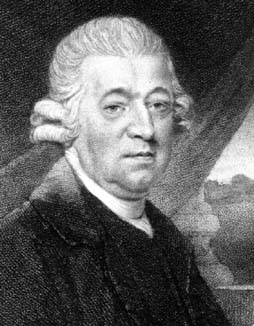
Nevil Maskelyne
 المؤلف:
D Howse
المؤلف:
D Howse
 المصدر:
Nevil Maskelyne: The seaman,s astronomer
المصدر:
Nevil Maskelyne: The seaman,s astronomer
 الجزء والصفحة:
...
الجزء والصفحة:
...
 31-3-2016
31-3-2016
 1579
1579
Born: 5 October 1732 in London, England
Died: 9 February 1811 in Greenwich, England

Nevil Maskelyne's father died when Nevil was 12 years old leaving the family rather poor. He attended Westminster School and was still being educated there when his mother died in 1748. Just before the death of his mother his interest in astronomy had begun after seeing the eclipse of 25 July 1748. Maskelyne writing about his school education said:-
Great mathematicians have become astronomers from the facility mathematics gave them in the attainment of astronomy; but here the love of astronomy was the motive of application to mathematics without which our astronomer soon found he could not make the progress he wished in his favouritescience; in a few months, without any assistance he made himself master of the elements of geometry and algebra. With these helps he soon read the principal books in astronomy and optics and also in ... mechanics, pneumatics and hydrostatics. The considerable progress he had made in these sciences led him naturally to the University of Cambridge...
Maskelyne entered Cambridge in 1749 where he studied mathematics and graduated seventh wrangler in mathematics in 1754. He was ordained a minister in 1755. Then he became a fellow of Trinity College Cambridge in 1756.
In 1758 he was admitted to the Royal Society, his recommendation describing him as
... a person well versed in mathematical learning and natural philosophy ...
In 1761 the Royal Society sent Maskelyne to the island of St Helena to observe a transit of Venus. This was important since accurate measurements would allow the distance from the Earth to the Sun to be accurately measured and the scale of the solar system determined. During the voyage he experimented with the lunar position method of determining longitude. Maskelyne returned to Chipping Barnet in 1761, where he was a curate, and worked on publishing a book. He published the lunar distance method for determining longitude in The British Mariner's Guide (1763).
In 1764 he went on a voyage to Barbados to carry out trials of Harrison's timepiece. Soon after his return, in 1765, he was appointed Astronomer Royal. He published the first volume of the Nautical Almanac in 1766 and continued to work on this project up to the time of his death.
Maskelyne proposed to the Royal Society in 1772, an experiment for determining the Earth's density with the use of a plumb line. He was not the first to suggest such an experiment. Bouguer and La Condamine had tried such an experiment over 30 years before.
Maskelyne carried out the experiment in 1774 on Schiehallion, a mountain in Perthshire, Scotland. Schiehallion was chosen because it was surprisingly regular and conical in shape so its volume could be determined accurately. From his observations Maskelyne computed that the Earth's density is approximately 4.5 times that of water. He was awarded the Copley medal of the Royal Society in 1775 for this work.
Books:
- D Howse, Nevil Maskelyne: The seaman's astronomer (Cambridge, 1989).
Articles:
- E G Forbes, The correspondence between Carl Friedrich Gauss and the Rev Nevil Maskelyne (1802-5), Annals of Science 27 (1971), 213-237.
- A W Lane Hall, Nevil Maskelyne, J. British Asrtonomical Association 43 (1932), 67-77.
- G S Leadstone, Maskelyne's Schehallien experiment of 1774, Physics Education 9 (1974), 452-458.
 الاكثر قراءة في 1700to1749
الاكثر قراءة في 1700to1749
 اخر الاخبار
اخر الاخبار
اخبار العتبة العباسية المقدسة


